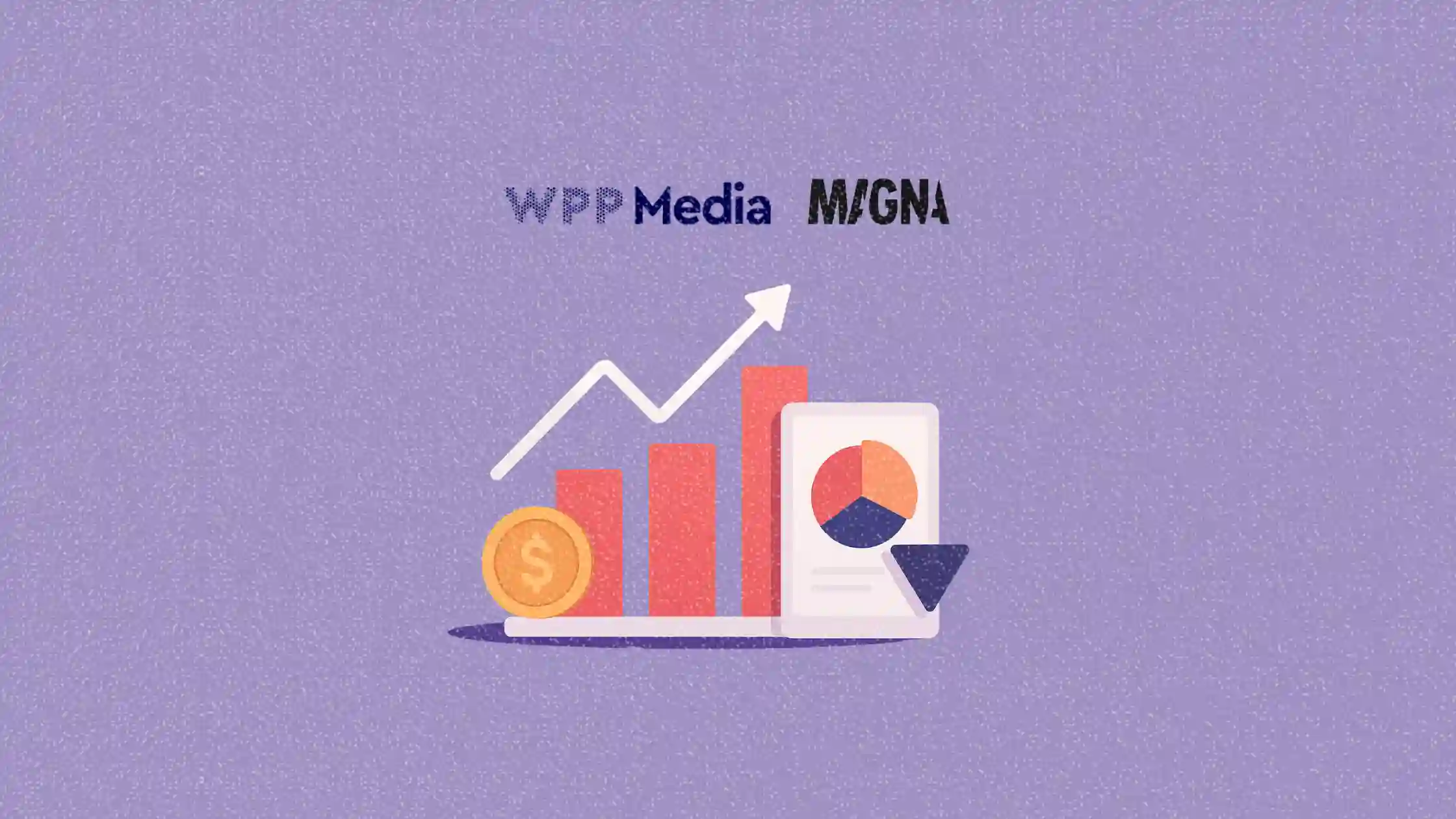2025 mid-year ad forecast according to WPP and MAGNA
Revised forecast sees slower growth as digital surges, traditional media stalls

A new mid-year forecast pegs global ad revenue at US$1.08 trillion for 2025, with growth now expected to land at 6%—down from the earlier 7.7% projection.
While the numbers still show momentum, economic uncertainty and geopolitical friction are starting to drag on advertiser optimism. The Mid-Year Global Advertising Forecast for 2025 from WPP Media and MAGNA’s Spring 2025 U.S. Advertising Forecast points to a recalibration across markets as businesses wrestle with inflation shocks, declining consumer confidence, and the specter of a wider trade slowdown.
This article breaks down the biggest factors shaping the 2025 ad market, and what brand marketers should be tracking as digital surges, AI accelerates, and traditional formats struggle to keep up.
Short on time?
Here’s a table of contents for quick access:
- Digital dominates with 73% of total spend
- Retail media and UGC drive content-led growth
- Confidence dips: U.S. and global markets cool forecasts
- What marketers should know

Digital dominates with 73% of total spend
Digital advertising continues to be the primary growth engine, projected to comprise 73.2% of global ad revenue in 2025—or 81.6% when factoring in digital extensions like streaming TV, DOOH, and digital print.
Search and commerce media will hit US$226.2 billion globally, with a 7.3% growth rate. In the U.S., digital pure players like Google, Meta, Amazon, and Spotify are forecasted to grow ad revenues by nearly 10% to US$293 billion, driven by advertiser demand for better performance and more automation through AI tools.
Streaming platforms are also getting a boost, especially ad-supported services. In the U.S., ad-supported streaming is expected to climb +14% to US$12.4 billion, accounting for 27% of total cross-platform national TV sales. Globally, streaming TV will contribute US$41.8 billion, rising to US$71.9 billion by 2030.
Retail media and UGC drive content-led growth
Retail media continues to stand out as the most dynamic sector, projected to reach US$169.6 billion globally in 2025—nearly 18% of total global ad revenue. By 2030, that number could balloon to US$252.1 billion.
Content-wise, the shift toward user-generated content is becoming the dominant trend. Ads placed around UGC on platforms like TikTok, YouTube, and Instagram Reels are now expected to surpass those placed around professionally produced content.
In 2025, creator-generated ad revenue will reach US$184.9 billion, up 20% from 2024, and is forecasted to more than double by 2030. This signals a broader shift toward personality-led, peer-influenced media environments over traditional studios and publishers.
Confidence dips: U.S. and global markets cool forecasts
While digital gains traction, macroeconomic uncertainty is dulling the overall outlook.
Global ad spend growth was revised down from 7.7% to 6% for 2025, and the longer-term CAGR through 2030 is now projected at 5.4%—a drop from the previously estimated 6.4%. Major markets like Brazil and India are still expected to grow rapidly, but even the U.S. has lowered expectations.
MAGNA now forecasts 2025 U.S. ad revenue to grow 4.3%, down from the prior 4.9% estimate. Non-cyclical ad growth has also been revised from 7.3% to 6.7%. Key sectors like CPG, QSR, and auto may freeze or reduce budgets due to supply chain exposure and inflation volatility. Meanwhile, categories like pharma, retail, and tech are expected to hold steady or expand.
Confidence has taken a hit due to inflation spikes in symbolic goods (like eggs), stock market dips, and broader uncertainty around global trade. All of this is expected to make marketers more cautious—especially in high-CAPEX, traditional channels.
What marketers should know
Here’s how strategic marketers can respond to the evolving outlook:
1. Lean into AI-enhanced channels
AI is helping advertisers streamline production and improve media efficiency. From campaign setup in Search to creative optimization in Social, AI is quickly becoming a necessity, not an experiment.
2. Retail media is no longer optional
With retail networks driving near double-digit growth, brands not actively testing commerce media will fall behind. The closed-loop measurement and proximity to point-of-sale are tough to beat—especially during tighter budget cycles.
3. Diversify your content mix with creators
UGC is leading the content economy now. Consider investing in micro- and mid-tier creators across key platforms. Their flexibility, relatability, and audience trust are outperforming even high-end professional content.
4. Rethink your traditional media playbook
TV and print are either flatlining or declining. Streaming and DOOH are the only traditional formats seeing meaningful growth. If legacy media is still in your core mix, it’s time to shift toward more measurable and agile alternatives.




